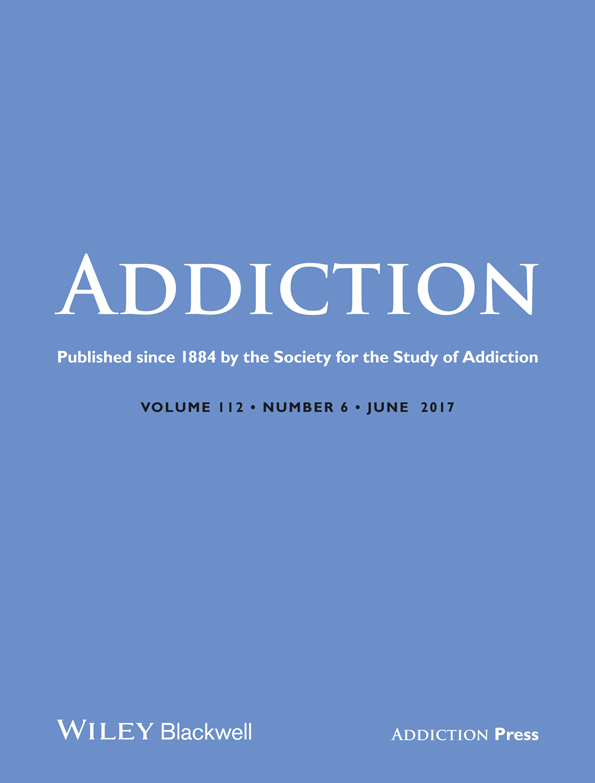A preliminary randomized controlled trial of contingency management for alcohol use reduction using a transdermal alcohol sensor
Abstract
Aims
We tested the efficacy of daily contingent reinforcement for reducing alcohol use compared with (yoked) non-contingent reinforcement (NR) using a transdermal alcohol sensor to detect alcohol use.
Design
Pilot randomized controlled design with 1 baseline week, 3 intervention weeks and 1-month follow-up.
Setting
New England, USA.
Participants
Heavy drinking adults (46.7% female) not seeking treatment were randomized to (1) an escalating schedule of cash reinforcement (CR; n = 15) for days on which alcohol was neither reported nor detected or (2) yoked NR (n = 15).
Intervention and comparator
Reinforcement for CR participants started at $5 and increased $2 every subsequent day on which alcohol was not detected or reported, to a maximum of $17. Participants received no reinforcement for days on which alcohol use was detected or reported, and the reinforcer value was re-set to $5 the day after a drinking day. NR participants were yoked to the daily reinforcer value of an individual in the CR condition, in order of enrollment. Paired participants in CR and NR therefore received the same amount of money, but the amount for the NR participant was not behavior-related.
Measurements
The primary outcome was percentage of days without sensor-detected drinking. Secondary outcomes were number of consecutive days with no detected drinking, peak transdermal alcohol concentration (TAC), self-reported drinks per week and drinking below NIH low-risk guidelines.
Findings
Controlling for baseline, CR had a higher percentage of days with no drinking detected (54.3%) than NR (31.2%) during intervention weeks [P = 0.05, Cohen's d = 0.74; 95% confidence interval (CI) = 0.007–1.47]. The longest period of consecutive days with no drinking detected was 8.0 for CR versus 2.9 for NR (P = 0.03, d = 0.85; 95% CI = 0.08–1.61). Peak TAC during intervention showed a non-significant group difference (P = 0.20; d = 0.48; 95% CI = 0.00–1.18); a similar result was found for drinks per week (P = 0.12; d = 0.59; 95% CI = 0.00–1.30). Four times more participants in CR drank below NIH low-risk drinking guidelines during intervention than did participants in NR: 31.1 versus 7.1% (P = 0.07; d = 0.71; 95% CI = –0.04 to 1.46). At 1-month follow-up, the highest number of consecutive days without drinking (self-report) did not differ significantly between conditions (P = 0.26), but showed a medium effect size (d = 0.44; 95% CI = −0.32 to 1.18).
Conclusions
Cash incentives linked to a transdermal alcohol sensor can reduce heavy alcohol consumption while the incentives are in operation.




